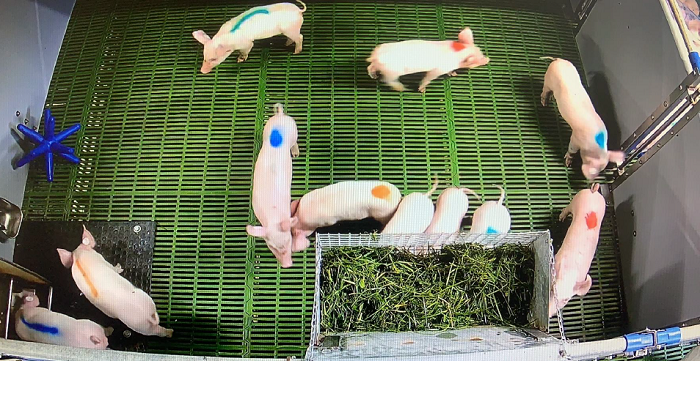06 June 2025
Cleaning liquid feed mix tanks

Ciaran Carroll of the Teagasc Pig Development Department takes us through the process of cleaning liquid feed mix tanks, an important task on pig farms given the quantity of feed used.
In 2023, the Teagasc Profit Monitor reported an average output of 2.491 tonnes of pig meat per sow per year and this pig meat was produced using 8.81 tonnes of feed. That’s a lot of feed going through the average sow herd. We all take precautions to ensure the quality of the ingredients or feed we buy but what precautions do we take to ensure the quality of this feed after we put it through a liquid feed system?
Previous work on liquid feed hygiene in Moorepark (WetFeed2) reported a potential financial return of up to €1.20 per pig, depending on the size of the farm. This article runs through a protocol for cleaning liquid feed mix tanks.
Frequency
- Daily (light cleaning): rinse after each batch,
- Weekly (standard cleaning): full cleaning with detergent,
- Monthly (deep cleaning): detergent + disinfection.
Materials needed
- Personal protective equipment (PPE): gloves, goggles, boots,
- High-pressure hose or pump sprayer,
- Warm water (~50–60°C),
- Feed-safe alkaline detergent,
- Food-grade disinfectant (e.g. peracetic acid, hydrogen peroxide),
- Brushes (long-handled, non-metallic),
- Bucket or container for cleaning solution,
- Squeegee or scraper (for manual cleaning, if needed)
Cleaning procedure
1). Preparation
- Wear PPE,
- Disconnect power to the mixer,
- Drain remaining feed completely from the tank and associated lines.
2). Pre-rinse
- Use warm water to rinse out feed residues,
- Use a pressure washer or hose to remove visible material from all tank surfaces, including agitator blades and corners.
3). Apply detergent
- Prepare a cleaning solution with a feed-safe alkaline detergent (follow manufacturer’s dilution instructions),
- Apply detergent to all surfaces using a foamer or manual brush,
- Scrub hard-to-reach areas manually if needed. Contact time: Allow 10–15 minutes for the detergent to break down biofilms and residues.
4). Rinse thoroughly
- Rinse all detergent off with clean, warm water,
- Ensure no soap residues remain, especially in corners and valves.
5) Disinfection (weekly or monthly)
- Apply a food-grade disinfectant using a low-pressure sprayer,
- Allow the disinfectant to sit for the required contact time (usually 10–20 minutes),
- Final rinse with potable water only if required by the disinfectant label.
6). Dry and inspect
- Allow the tank to air-dry or use a clean squeegee to speed up drying,
- Inspect tank for cleanliness,
- Reconnect power only after ensuring tank is dry and safe.
Optional: Pipe and line cleaning
- Flush lines with warm water and detergent weekly,
- Sanitise with approved disinfectants, ensuring they are compatible with the line material.
Record keeping
- Log date, time, and person responsible for cleaning,
- Note any issues (residue, damage, unusual smells).
Tips
- Change disinfectants monthly to prevent microbial resistance,
- Clean during low-use periods to minimise downtime,
- Periodically test for microbial contamination (e.g. swab tests or water samples from rinse water).
The above was first published as part of the Teagasc Pig Newsletter for May.
More from Teagasc Daily: Focus on sow replacement rate
More from Teagasc Daily: The water footprint of pig production in Ireland – a good news story
